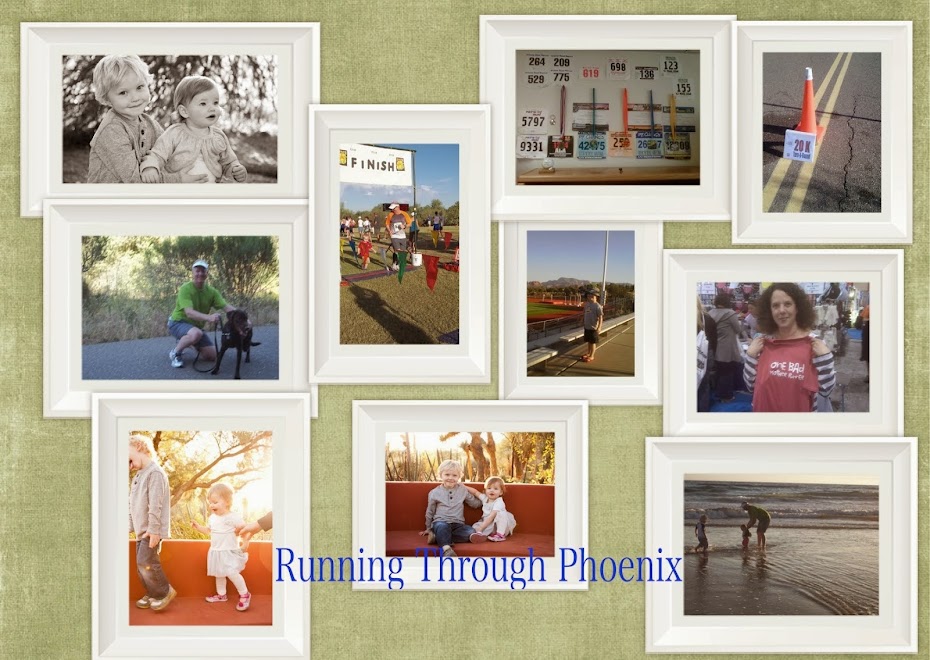 |
| THE Garmin 305 Forerunner |
The 305 ('ole Red) is worn on the wrist like a watch. Like a toaster-watch. Seriously, it's bigger than most watches but fits well for most people. It catches gps satellite signals so that it can track your exact location, your speed, your distance, the exact route you are taking, and combines that data into a few other useful displays like pace and time spent running. The 305 usually comes with a heart rate monitor strap which is worn around the chest, and you can also get a cadence sensor for your bike data and a foot pod to measure running data indoors (treadmill). The auxiliaries connect wirelessly to the main 305 and add to your information overload.
The 305 itself holds about 50 workouts and then it starts writing over the oldest workouts, so most people download their information into one or more of several online and/or pc-based applications. I use Garmin Training Center which is loaded on my laptop and also Daily Mile which is an online social running/workout network. After I download my workout, I simply delete the data from the 305 to keep it clear and to stay in routine. I used to load workouts into the Runners World online log but stopped because I wasn't using that information in any useful way.
The 305 has a multitude of functions and display options, and it really comes down to what I want to see while I'm out running, because I can get all the other information when I return home. The 305 collects everything, but only displays up to 12 fields (between three separate screens) on the unit itself. Those 12 fields are found on three screens that I can toggle between, and the fewer displays per screen the larger the data displays --one data display per screen is large, but with four, it has to divide the screen into four so the data displays are smaller. This only matters when you are gasping and wheezing and trying to see how fast you are accelerating after running off of a cliff. *
Most of the time, I like to see current pace and average pace. Almost all of my routes are pre-planned, so distance is known, and time is not ever important for me. I'm a pace junkie and that is that. So screen one is pace and average pace.
Screen two has three fields for lap pace, distance, and average pace. I use this screen when doing speed work and only really look at lap pace.
Screen three is a repeat of screen two, but distance is the top display. I look at this when I'm running without a pre-planned route or when I go off route.
The 305 also has a feature called virtual runner which allows me to set a pace in the computer and run against that pace. The 305 displays a skinny 20 year old Kenyan on roller skates racing against a pudgy stooped 45 year old running through mud. Guess who is who?
I love the free software "Garmin Training Center" that comes with it. It tracks all my runs and allows me to compare runs to each other. Garmin also has an online semi-social site called Garmin Connect which maps and keeps data and shares it with others. Meh. Not so much. For PC users, there is Sporttracks, which is the penultimate online tracking software. You can re-live your runs in 3D and see all sorts of other kinky cool data collusions. I'm an Apple user, so I don't get to play with that, but someday....... I can picture one lonely nerd in the back cubicle at Sportracks working to try to build a digital bridge for the Apple users. Give it up buddy, you'll never make it.
Some of the drawbacks:
- It is not waterproof, but does claim water resistance. Though after some heavy duty sweating, the sound of the beeps has diminished considerably and sometimes I need to clean the contacts on the back so it will connect to the cable. There is a waterproof version which can be used for swimming, and perhaps is more resistant to sweat. Salt from sweat is corrosive on most materials over time, so it may be a once every five years investment to get the latest version. Garmin is now moving a 610 version for $350 that has a touch screen but otherwise all the same features of the 305. $350?? Seriously??!? You can find a 305 with HRM for well under $150, and around the holidays for $99. That can't be beat.
- PIRNIG --problem in runner, not in Garmin. If you accidently press start and stop buttons on the 305, it will start and stop. It doesn't recognize accidental button pushes, or whether a runner forgets to restart the unit after
shitting in the bushes stopping at Dunkinwaiting, pissed off, at a traffic light. - It's ok to let data drive most decisions, but a natural or 'naked' run is nice once in a while. That is a run without electronics or route or speed or anything else besides you and your 3" shorty-shorts. And running shoes. Barefoot running causes cancer and melodramatic heel spurs in everyone who even tries it just once.
I really love my Garmin, and recommend it for everyone who likes to keep track of their running and set goals for improvement.
Do you use a Garmin? What data fields do you use? What online or PC-based application(s) do you use?
* A despondent physics student jumps off a bridge, and falls for three seconds before hitting the water. How fast is he going when he hits the water?
Approximating g as 10 m/s2, he will gain 10 m/s of speed each second. After one second, his velocity is 10 m/s, after two seconds it is 20 m/s, and on impact, after falling for three seconds, he is moving at 30 m/s.


